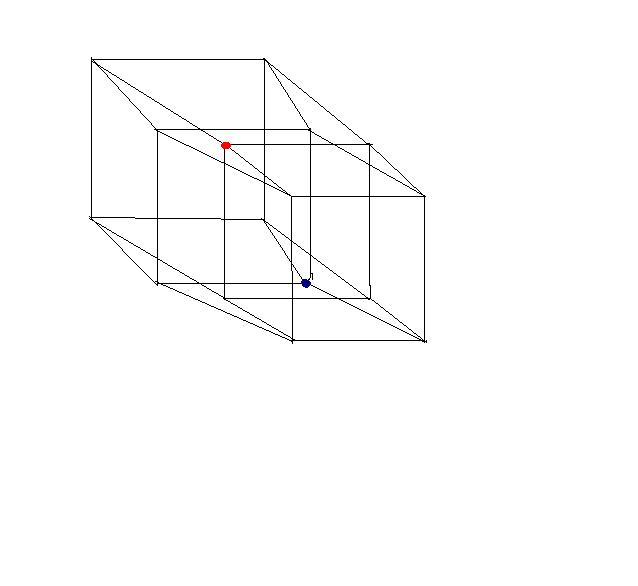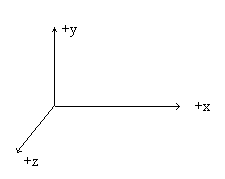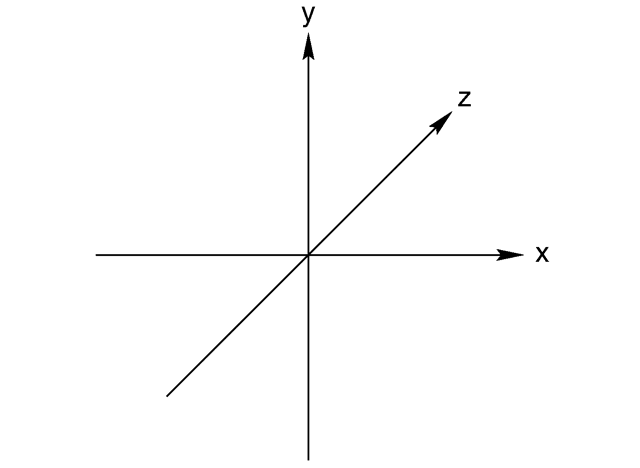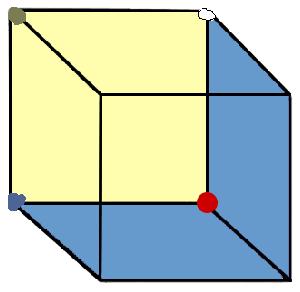Prashantkrishnan wrote:Does the movie theatre really give the feeling of a lateral inversion? I have not observed them much, and I will have to observe the kind of VRI we get in a movie theatre to properly understand what you are saying.
Here's the video that I made about the Movie Theater VRI Flip to explain how one can get their orientation easily turned around inside of one. This happens to a lot of people, and they find that when they leave the theater, they start heading for the exit in the "wrong" direction because they got "turned around" with a VRI during the movie, but didn't realize it. Things normally flip "back to normal" after a short time. What I find interesting is to consciously do a VRI flip while in a movie theater, which is the easiest place for me to do them. I can mentally turn the theater around to each of the four orientations quite easily. Actually, one can learn to do this wherever they are with practice.
https://www.youtube.com/watch?v=xETQaPrDeQQAfter seeing the video, does this make the VRI flip there more understandable? It would be interesting if you could try doing the VRI flip yourself in a movie theater the next time you go, I would very much like to hear if you can do the flip there yourself!
Prashantkrishnan wrote:A 4D being would be able to see the cube from two different viewpoints outside the realm of the cube. A viewpoint in flunespace for a 3D cube would thus give as many different orientations as our viewpoint could give for a 2D square. If you mean rotating a cube in four dimensions and looking at it from the same realm, we get the Necker Cube itself. I'm not sure whether this is what you mean here when you say "3D cube viewpoint". I'm not much familiar with the movie theatre room

If you mean a 4D analogue of this, something like a 'Necker Tesseract', then here's an imprecise drawing (I use paint, and I'm not experienced with various softwares) of a 2D projection of how a tetronian would see it from my new website:

The 4D creature would see the red vertex as the nearest and the blue vertex as the farthest as one orientation and the other way round as another orientation. The remaining vertices all lie on the projection envelope, so there are no more orientations for this. These two rotations can be rotated into each other around their realm of symmetry in 5D.
That's a really interesting 4D Necker Cube picture! Thank you.

When you say "
A 4D being would be able to see the cube from two different viewpoints outside the realm of the cube" this is fascinating to think about and try to understand...
Within actual 4D, wouldn't there would be multiple 3D cubes, each with its own Necker Cube type of reorientation flip possible, in all those different directions?
Prashantkrishnan wrote:I believe you mean that you can spot each surcell of the tesseract and visualise it as a cube when you 'look at it that way'. Looking at the entire tesseract that way is what causes the problems we get trying to visualise 4D. We have to imagine all the details we know about the tesseract and feed them into the projection (all in our head) and this requires immense concentration. I have never been able to do it. I have tried to visualise a dichoral angle, which is the simplest 4D structure we need to be familiar with to try to visualise anything else. I can't say I have succeeded.
This is why I feel there is still hope that this phenomenon can somehow be shown to be 4D related, because we find it so hard to think about actually visualizing 4D, that the actual experience of it may be something we don't really expect, like how the VRI appears to us as something like a simple 3D rotation, but in actuality may be much more complex. When I talked to Rudy Rucker about the VRI, he said that if we got turned around in 4D we'd turn into our mirror image, but I asked what if both we
and our surroundings got turned around in 4D together, and then he understood what I was trying to say... Then it's like you said in your original post that "he would not notice any change in himself" and I think his surroundings too,
except for a change in orientation.

The idea I'm proposing is that we're not just 3D ourselves getting turned around in 4D space, but we're 4D in 4D space, with the ability to see all those other directions, but only in 3D at a time because of our limited viewpoint.
Prashantkrishnan wrote:I have often wondered why we cannot see objects outsidde our realm even if there is an unobstructed path for light from them to our retina. I think that since we have a 2D array of cells in our retina, only a single plane normal to our line of sight can be visible to us at a time. Our retina does not have enough space for 3D images. When light from our realm enters our eye and hits the retina at a spot, while at the same time another ray of light from outside our realm hits the same spot, the one from our realm passes through our eye lens while the other one does not. I think that because of this, our eye might give preference to the former ray, as both images cannot be stuffed into the same spot.
It's interesting to think about what a 4D being would experience with a 3D retina, then it would be able to see from more directions within that 4D space... Another thing that I've thought about is that 3D isn't "flat" to a 4D being, it is still 3D, with each angle at 90 degrees to all the other ones, so a 4D being with a 3D limited viewpoint would see a 3D cube "all around itself", not just "in front of itself", which is like what we see, and what I'm thinking is that the VRI is a result of us being higher dimensional, because we can see what appears to be 3D around us, from different directions, because our retinas are actually 3D, and can look in all those other directions too.
Prashantkrishnan wrote:If we are actually 4D beings, we ought to be able to move out of this realm. We may at most be thin 4D prisms confined to a realm by some solid barriers which prevent us from moving out of the realm. This model has been mentioned by quickfur in the thread 'Dimensional Baby Steps'. And we don't actually see 3D slices, we see 2D projections of 3D objects. (You may call them 3D slices if you think of them as small prisms, of course). If we had the freedom to move around in a flune, then we could have infinitely many 3D "slice" viewpoints. I'm not sure what you mean by "types of 3D slice viewpoints".
By "3D slice viewpoint", I mean the whole 3D viewpoint around us, which is represented in our brain as a 3D cube with up/down, right/left and forward/backward. With Necker Cube type VRIs, one can interchange the axes with each other to see different orientations, each being a different viewpoint.
On Earth, one can only do 4 different viewpoints with VRIs because of what we perceive as the "down" direction of gravity, but up in space, astronauts can consciously do VRIs around to every orientation possible, which is 4 orientations for each of the 6 sides of a cube (4X6) which is 24.
It would be interesting for you to make a Neck-A-Cube and see how it relates to what I'm saying about the VRI connection.
On this page, it explains
How Does One Obtain the Ability to "See" in Four Spatial Dimensions? and it has an explanation for making a Neck-A-Cube, designed by Rudy Rucker.
http://128.143.168.25/classes/200R/Projects/fall_1999/fourdim/how.htmlOn this page, there is Appendix C, which contains a larger version of the Neck-A-Cube to make an actual model for yourself to experiment with:
http://128.143.168.25/classes/200R/Projects/fall_1999/fourdim/app.htmlMathematician and writer Rudy Rucker adapted this design for use in helping visualize four dimensions. The following are his directions in making what he calls a Neck-A-Cube (Figure 9):
1. Trace figure.
2. Cut out around outline.
3. Crease line AC, and then crease line DE. Each time crease by folding the marked surfaces together.
4. Slit from A to B.
5. Slide one of the upper “squares” behind the other to make something like the corner of a room where walls meet ceiling. Cup the object in your right hand.
6. Close one eye and stare at the corner. “Pull” at the corner till Necker reversal takes place.
7. Once the object is solidly reversed, try moving your hand around.
8. If you have trouble getting the illusion, make sure that the model is uniformly lit (so that shadows don’t provide depth cues); and make sure to hold it still until Necker reversal has taken place. This is kind of what the VRI does with our orientational viewpoint, except that it is "all around us", we are "inside the cube itself!"

 It should be normal to his line of sight.
It should be normal to his line of sight. It should be in the same realm as him.
It should be in the same realm as him.












 If you mean a 4D analogue of this, something like a 'Necker Tesseract', then here's an imprecise drawing (I use paint, and I'm not experienced with various softwares) of a 2D projection of how a tetronian would see it from my new website:
If you mean a 4D analogue of this, something like a 'Necker Tesseract', then here's an imprecise drawing (I use paint, and I'm not experienced with various softwares) of a 2D projection of how a tetronian would see it from my new website: 